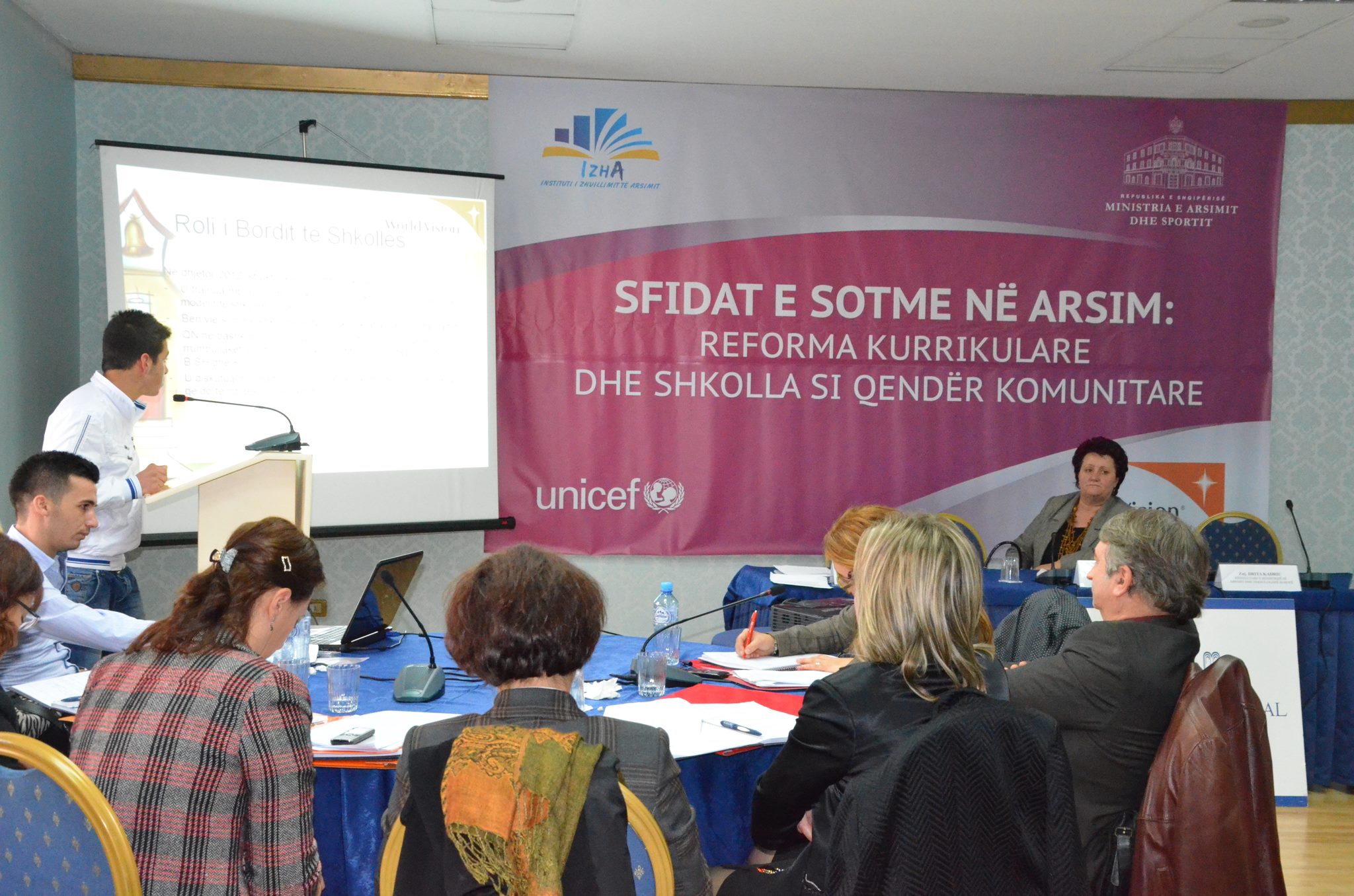Helping all Albanian students receive a better education
During the launch of the first phase of the “Todays challenges in Education” conference entered around curriculum reform, representatives from World Vision’s Education programme shared their experiences as well as the Child Friendly School model, which has been implemented two years ago in the schools in areas where World Vision’s programmes are active. The conference was jointly hosted by the Ministry of Education and Sport and the Institute of Educational Development (IZHA) and supported by World Vision and UNICEF.
During her speech, the Minister of Education and Sport, Mrs. Lindita Nikolla, highlighted the importance of the new curriculum reform as a element in the success of future generations. “School should be the place where the ideas of children turn into action,” she said.
World Vision’s Child Friendly school system
Along with other organizations and specialists, that presented their strategies for creating schools as community-centered services, Mrs. Brisida Jahaj, World Vision’s Education Manager explained the Child Friendly School system by inviting a student and a teacher from two of the schools where this model has been implemented to present real examples on how this platform has worked and succeeded in Albanian schools. “We count on children and in their potential” highlighted Brisida as she explained more about the Child Friendly School Model.
Mariglen, 17, a member of student government in the Korça Area Development Programme (ADP) and Aida, a teacher from Shkodra ADP shared their experiences with two different initiatives. First, Mariglen, explained how through a student-led initiative they were able to restoring the toilets at “Rrëmbec” school, Korça ADP. Then, Aida explained how in her community there were able to fill a library that had no books at all with books at the “Grude e re” school in Shkodra.
[Mariglen talking about the school initiative in his city, photo by Klevisa Breshani/WV]
Both of these initiatives were made possible because students, staff and community members were trained by the World Vision about the Child Friendly School system. Both initiatives where undertaken by the student governments and solved the collaboration between parents and local donors. “It was challenging to raise funds and solve the problem, but [because we had] the drive and our desire to make our school a better place for all students, we did not stop until we achieved concrete results,” remembers Mariglen.
“It was so beautiful to work together and see how people donate something to contribute to better conditions in their children’s schools even though they don’t have even enough food to eat for themselves,” said Aida.
World Vision’s Child Friendly Schools model is focused on making the voice of the student government stronger and more active in the decision making in their schools. It also aims to create child friendly environments at schools by channelling the energy, passion and plans of student governments and children. The goal of the program is: for all schools to have good health conditions for every child; for children know how to act during a natural disaster; for all children to be protected and for children of both genders to be equally respected so that all children can have access quality education where parents and schools help students to achieve their goals.
During the conference, specialists highlighted the importance of lifelong learning and emphasized the importance of preparing students for life, starting in preschool system and continuing throughout all levels of education.
“These concepts are in line with the new strategy of World Vision which aims to contribute to enable the members of school structures to be active to contribute for a quality education for all children,” added Brisida.
The second meeting about curriculum reform will take place in January, 2014, at which time the Ministry of Education and Sport, education specialists and World Vision will work to continue to develop a curriculum that will help schools to be the best possible place for children to learn, enabling them to have full and productive lives in the future.
-Ends-
